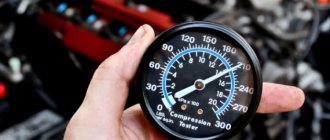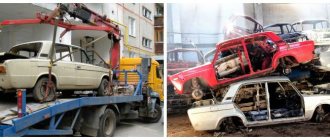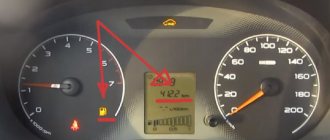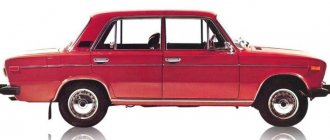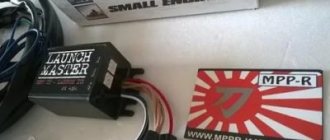Let's take the TS1 brand of kerosene, namely, aviation to supersonic fuel for turbojet engines. Now let’s briefly look at the fuel system in a primitive scheme, solely to understand what we need to flush and where problems may arise. For example, let's take a VAZ-2112 with fuel injection (for naturally aspirated engines, almost everything is the same, only there is a carburetor). So, a fuel tank with a fuel control system (about the same as a float in a toilet tank, only more sophisticated with electronics), a fuel pump, a fine fuel filter, a fuel rail, a fuel pressure regulator, injectors and an injection system. We will omit other components of the system, since they cannot be cleaned with kerosene, but require cleaning by another method.
Kerosene in the gas tank (do not repeat!)
There is a lot of strange advice on the Internet. For example, one garage specialist recommends adding a mixture of half a liter of kerosene and one hundred milliliters of acetone to the fuel. By pouring it into the gas tank, in return you will supposedly get improved dynamics (due to cleaned injectors), and for some reason fuel consumption should also decrease. According to the author of the advice, his drug surpasses all branded products both in effectiveness and in terms of price/quality ratio. And he also writes this:
Kerosene is used as aviation fuel. But it is not suitable for an engine in its pure form, since it has a high octane number and excessive detonation may occur.
Regularity of engine cleaning
Experts recommend cleaning the fuel system using aviation kerosene no more often and no less than once a year. This allows you to prevent problems with rare earth coating of engine cylinders, while simultaneously eliminating all possible deposits on the elements of the injection system. This work is best done in the fall before the onset of cold weather, which simultaneously solves problems with water accumulated in the gas tank.
The car owner only needs to understand that the use of kerosene will, first of all, be an excellent preventive measure against the appearance of plaque and contamination on the elements of the fuel system. However, dealing with existing serious pollution in this way will be problematic. Therefore, you should regularly clean the engine using a small amount of aviation kerosene from existing contaminants; only in this case will it be possible to subsequently prevent the occurrence of various types of malfunctions, the elimination of which will require significant financial costs for the car owner.
conclusions
The use of aviation kerosene, which is added to the gas tank, allows you to bind and remove water, as well as cleanse the entire fuel system of existing contaminants and dense deposits. This is a completely safe and effective product that is easy to use. It is recommended to carry out such cleaning on a regular basis annually, which will be an excellent prevention of serious engine malfunctions, while reducing the car owner’s costs for operating and repairing his car.
07.08.2019
What is heavier: kerosene or gasoline?
These include gasoline
and
kerosene
. … Table
| Petrol | Kerosene |
| Atom chains are shorter | Hydrocarbon formations longer |
| Produced with less heating of oil | It needs a higher temperature to boil. |
| Flashes instantly, extremely fire hazardous | Flames up gradually |
| Releases less energy | Calorific value is higher |
Is it possible to drive on kerosene?
- To reply, please log in to the forum first.
#1
- Messages 31
*/—> 31
- Name: Andrey
- City: Bila Tserkva
- Auto: Tavr
- State number: AM8345AN
- Registration: 05/27/2006
- Top
#2
- Messages 247
*/—> 247
- Name: Roman
- City: Lviv (Ukraine)/Freiburg (Deut
- Registration: 05/25/2009
There really are barrels of free kerosene. As far as I know, you can’t use it to fuel a gasoline engine? Or how can you make gasoline from it? As far as I know, guys add kerosene to diesel. Maybe it can be mixed with gasoline?
- Top
#3
- Messages 668
*/—> 668
- Name: Oleg
- Herson city
- Car: Omega A, '90, automatic transmission, CD Diamond, C20NE, methane
- State number: VT4074AE
- Registration: 01/24/2009
- Top
#4
- Posts 2,766
*/—> 2766
- Name: Marat
- The city of Odessa
- Auto: Battle Tomato
- Registration: 08/01/2007
sell kerosene, buy gasoline, don’t torment the cars
Even if you are alone against everyone, this does not mean that you are wrong. © Hugh Laurie
- Top
#5
- Messages 983
*/—> 983
- Name: Oleksandr
- City: Kyiv
- Car: Omega A C20NE '88 bula, Opel-VW Sharan V6, Skoda Fabia 1.4 '04
- State number: AA6718EC
- Registration: 08/29/2005
There really are barrels of free kerosene. As far as I know, you can’t use it to fuel a gasoline engine? Or how can you make gasoline from it? As far as I know, the guys add kerosene to diesel. Maybe it can be mixed with gasoline?
Every action gives rise to a reaction. (Murphy Newton Murphy Newton's Third Law)
- Top
#6
- Messages 1,598
*/—> 1598
- Name: Sergey
- City: Kyiv, Poznyaki village :)))
- Car: Opel Omega A 1992 23DTR Turbo+Intercooler
- Registration: 07/01/2003
- Top
#7
- Messages 214
*/—> 214
- Name: Alexey
- City: Kyiv. Borshchagovka.
- Car: Opel Vectra A
- State number: AA0283CE
- Registration: 01/06/2009
- Top
#8
- Messages 3,502
*/—> 3502
- Name: Oleg
- City: Khutir Zhitomir, Lviv
- Car: Toyota Camry 40 3.5 V6
- Registration: 06.06.2008
- Top
#9
- Messages 29,995
*/—> 29995
- Name: Konstantin
- City: Dnepr
- Car: Opel Astra Classic 1.6
- State number: AE0235SV
- Registration: 09.12.2003
It’s still better to fly on kerosene
- Top
#10
- Messages 2,070
*/—> 2070
- Name: Mikhail
- The city of Odessa
- Car: Hyundai Accent
- Registration: 05/11/2008
- Top
#11
- Messages 11,132
*/—> 11132
- Name: Zhenya
- City: Kyiv, Kharkovsky
- Car: Opel Astra G Z16XEP
- Registration: 05/03/2007
- Top
#12
And was born to run
- Posts 45,737
*/—> 45737
- Name: Andrey Alekseevich
- City: Kyiv
- Car: Small but very brave Astra Kati USER
- Registration: 11/11/2007
Kerosene has an octane number of 30-50, depending on the type. So you can drive, but not for long
100 is an abbreviation.
My tel. 093-459-22-20 from 09-00 to 21-00
Faults are dirty and rusty. I'm for dirty ones, they're easier to fix.
- Top
#13
- Messages 31
*/—> 31
- Name: Andrey
- City: Bila Tserkva
- Auto: Tavr
- State number: AM8345AN
- Registration: 05/27/2006
Modified by: Man95, 11 September 2009 - 12:18
- Top
#14
- Messages 3,784
*/—> 3784
- Name: Zhenya
- City: Kyiv region N.Petrovtsy
- Car: Geely SL 1.8 Сomfort+Dual Chip+GBO Tartarini
- State number: AI1348EN
- Registration: 05/03/2006
“The one who walks will master the road, the one who seeks will find, the one who looks will see” (c) Chinese wisdom
- Top
#15
- Messages 13,655
*/—> 13655
- Name: Sergey
- Registration: 06/25/2006
If you find a barrel of alcohol, fill it too. Just don’t interfere too much, otherwise the engine speed will start to fluctuate, the exhaust will be muffled, the wheel alignment will be annoying and it will all end in a penalty area.
Well, you're definitely not a Slav. Who's going to pour alcohol into our tank? I’d rather pour half a liter into myself in the morning and go to work on a lisaped in a tie, suit, “so much for the job”
Decarbonizers: LAVR, XADO or our own production from kerosene
Automotive chemicals do not always have a “tricky” composition, and quite often you can do it yourself using improvised means. This statement fully applies to means for decarbonizing piston rings and other combustion chamber parts. Making your own decoking agent is quite simple; to do this, you need to mix acetone and kerosene in a 2 to 1 ratio. If you decide to prepare a liquid for cleaning combustion chamber elements yourself, you should assume that you will need about 150 ml of it per cylinder.
There are dozens of specialized tools on sale for performing engine decarbonization. The most famous are LAUR and XADO, which gained their popularity due to their low price and good properties. Their composition is a little more complicated than just mixed acetone and kerosene, but the cost of such products is appropriate.
When choosing a decarbonizer, it is important to look at how many cylinders one tube is designed for. Most often, manufacturers produce such “chemicals” in small tubes of 10-15 milliliters. One such tube is used for one engine cylinder. Also, when purchasing a decarbonizer, you need to pay attention to the type of engine for which it is used - gasoline or diesel.
Gasoline in a diesel engine
Every car enthusiast knows that the fuel required by the design of the vehicle must be filled into the tank of the car. Sometimes mistakes happen. Some car owners are trying to experiment. They believe that you can independently obtain a combustible mixture; you just need to mix gasoline and diesel fuel in certain proportions.
Every car's internal combustion engine is designed to run on one type of fuel. If other fuel gets into the system, big problems will arise. The most favorable outcome when making such a mistake is to carry out simple manipulations:
- washing the tank;
- highway cleaning;
- replacing filters.
How can you suspect that gasoline is poured into a diesel fuel tank? Since diesel fuel is denser, when it enters the engine, its operation will not change.
Next, processes will begin to occur that disable the internal combustion engine. The combustion chamber does not work as before; diesel fuel and gasoline ignite at different temperatures, which causes a malfunction. At this time, the driver can determine that the engine rhythm is disturbed. At the same time, there is an increase in temperature in it, which is monitored on the dashboard. This is a reason to stop and check if everything is okay. Perhaps at this moment the car owner will remember that he filled up with gasoline instead of diesel, or will suspect a mistake made by the operator at the gas station.
Did you manage to travel a long distance? Calling a tow truck would be the right decision. All that remains to be done is to send the vehicle to a service station. They will help you solve the problem. When you suspect something is wrong, immediately drain all the fuel from the tank and fill it with diesel fuel. It is allowed to mix 40 liters of gasoline and 10 liters of diesel fuel. With such fuel you can continue driving with periodic refueling. In this case, experts recommend adding additives that increase the cetane number. You can fill the engine with 50 ml of oil, which is intended for two-stroke internal combustion engines. The volume is indicated for 1 liter of gasoline that entered the tank by mistake.
Flushing the engine with kerosene (diesel oil) - benefits and harms
True, similar methods were used and were relevant several decades ago, since the number of car service points was extremely low. Currently, modern cleaning technologies are equipped with computer devices, which allow you to quickly and accurately flush the internal combustion engine.
Today, the method of flushing the engine with these compounds is becoming a thing of the past, since in addition to the benefits of the procedure, you can also get harm.
Over time, engine designs and lubricants for automobiles undergo constant changes. If the driver nevertheless decides to wash the new power unit with kerosene or diesel fuel, then he will immediately say goodbye to its warranty.
The only rational option for such washing is considered to be a situation where the power device is completely dismantled and disassembled in parts.
Despite the legends that surround these oil flushing products, they will not completely cope with the task. The engine system always contains hard-to-reach areas where contaminants are densely located.
Therefore, if kerosene penetrates into this area, even in small quantities, the oil product will remain there. And this is fraught with consequences.
If the owner of the car fills in a new portion of the lubricating mixture, the remaining kerosene will be mixed with this motor fluid. As a result, the lubricant will lose some of its beneficial properties.
Theory
Engines designed for 76 gasoline have a lower compression ratio (7.5-8.5) than engines designed for 95 gasoline (10-12). That is, an internal combustion engine for 76 gasoline will be able to compress the fuel mixture only ≈ 8 times, while an internal combustion engine designed for 95 gasoline will compress it ≈ 10 times.
If you pour 76-octane gasoline into an engine with a high compression ratio, the internal combustion engine will operate with detonation. In this case, the fuel mixture will explode earlier than necessary for the correct operation of this engine. Such detonation can destroy the engine.
What's the result?
Let's sum up the intermediate results. By mixing diesel fuel with kerosene , we get:
- reduction in engine power;
- lower fuel economy;
- insufficiently low filtration temperature;
- reduction in fuel lubricity;
- reduction in cetane number.
These shortcomings are relatively easy to overcome. It is enough to use modern fuel additives . But what to do when you have access to free kerosene?
There is a solution. You can mix kerosene with motor mineral oil in a ratio of 1:40 and increase the cetane number by introducing additives . But the resulting fuel will still be less stable than straight-run diesel.
Aviation and automobile gasolines
The main areas of use of gasoline were their use for the operation of automobile and aircraft engines.
But each of the listed areas of use in production technology has its own significant differences, which determine the properties of petroleum products. In order to ensure the most efficient and rational use of oil, it is subjected to a distillation procedure, which allows for division into fractions. The technology consists of heating a liquid to a certain temperature. As a result, vapors are formed, after cooling of which the condensate will be the manufactured oil product: it can be gasoline, diesel fuel, kerosene, naphtha, or fuel oil.
Oil fractions are heterogeneous, so it is impossible to use any strictly defined chemical formulas to express them. At the same time, gasolines are light petroleum fractions that boil away at temperatures above +200 ˚С. These are organic mixtures that, depending on their chemical composition, will have individual properties. Ultimately, they determine the quality of the fuel.
The main areas of use of gasoline were their use for the operation of automobile and aircraft engines. But each of the listed areas of use in production technology has its own significant differences, which determine the properties of petroleum products.
The difference between gasoline B 91 115 and Avgas 100 ll
Aviation gasoline B 91 115 is a mixture of fuel obtained by direct distillation using catalytic reforming. The composition of such fuel includes alkylbenzenes, toluene and various additives (ethyl, antioxidant, dye). Aviation gasoline Avgas 100 ll consists of a mixture of similar high-octane and base components. To obtain this grade of fuel, ethyl, dye and additives are added to prevent the formation of corrosion and static electricity.
The differences between the two brands of flammable substances lie in the grade, additives used, components and different tetraethyl lead content. In the first grade of fuel, the amount of tetraethyl lead should not be more than 2.5 g/kg, in the second - 0.56 g/l. The letter code ll in the name means low lead content in the fuel. The less lead there is in aviation gasoline, the better its environmental characteristics. Cleaner gasoline will not only protect nature from destruction, but will also reduce the toxic effects of fuel on workers who are constantly forced to come into contact with it. It is worth noting that the legislation of the Russian Federation does not regulate the addition of additives against corrosion, crystallization and static to the composition of aviation fuel.
Why do you need to take measurements?
Density helps evaluate the brand of gasoline and its volumetric weight. This value is necessary when dispensing fuel and receiving products.
Due to temperature fluctuations, fuel performance may vary, which can cause disagreements when dispensing and receiving petroleum products. Therefore, to standardize the process of measuring the density of petroleum products, rules have been developed for recalculating the amount of petroleum products depending on the average indicators for fuel brands.
In this case, density helps determine the chemical composition of gasoline and identify it. Each brand has its own density indicators, which vary within small limits. For example, if during the measurement we obtained data that is higher or lower than the standard values, then without conducting a laboratory chemical analysis it is impossible to verify the reliability of the presented brand of fuel.
Also, by calculating the density of gasoline, it is possible to determine the approximate mass of large volumes of petroleum products (for example, in tanks) when weighing is impossible. These measurement methods are specified in GOST R 8.595-2004.
Gasoline and diesel fuel have different chemical compositions and combustion characteristics, including ignition temperatures.
- Diesel fuel is produced this way: crude oil is heated to produce diesel fractions. The fractions are then broken down (this is called cracking) at different temperatures. Next is the hydrotreating stage, where sulfur compounds are removed from the diesel fuel. At the final stage - the addition of additives that improve viscosity and fluidity, and for winter diesel fuel - the process of paraffin separation.
- To produce gasoline , crude oil is heated, releasing gasoline fractions containing large amounts of sulfur and aromatic hydrocarbons. During the cracking process (splitting fractions), hydrocarbons and sulfur are removed from the fuel and the octane number is increased. Then, depending on the type of gasoline, additives are added.
